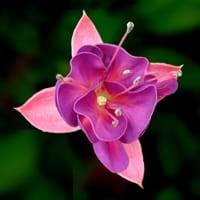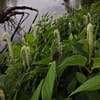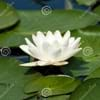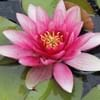Life Span
Perennial
Perennial
Type
Aquatics
Tender Perennial
Origin
World/Pandemic, North America, Caribbean, Europe, Northern Africa, Asia
Caribbean
Types
Not Available
Fuchsia Decidua, Fuchsia Fulgens, Fuchsia Splendens, Fuchsia Microphylla
Number of Varieties
Not Available
Habitat
Boggy areas, Near ponds
Forest edges, Woods
USDA Hardiness Zone
2-12
9-10
Sunset Zone
21,22
16, 17, 23, 24
Habit
Clump-Forming
Arching/Fountain-shaped
Flower Color
Sienna, Chocolate
Orange Red
Flower Color Modifier
Not Available
Not Available
Fruit Color
Not Available
Not Available
Leaf Color in Spring
Green
Purple, Dark Green
Leaf Color in Summer
Green
Purple, Dark Green
Leaf Color in Fall
Not Available
Purple, Dark Green
Leaf Color in Winter
Green
Unknown
Leaf Shape
Grass like
Long Linear
Plant Season
Summer, Fall
Spring, Summer, Fall, Winter
Sunlight
Full Sun, Partial Sun
Full Sun, Partial Sun, Partial shade
Type of Soil
Loam, Sand
Clay, Loam, Sand
The pH of Soil
Acidic, Neutral, Alkaline
Acidic, Neutral
Soil Drainage
Poorly Drained
Average
Bloom Time
Summer
Indeterminate
Tolerances
Wet Site
Drought
Where to Plant?
Container, Ground
Container, Ground, Pot
How to Plant?
Divison, Seedlings
Seedlings, Stem Planting, Transplanting
Plant Maintenance
Medium
Medium
Watering Requirements
Does not require regular watering, Water Deeply
Requires regular watering
In Summer
Lots of watering
Lots of watering
In Spring
Moderate
Moderate
In Winter
Average Water
Average Water
Soil pH
Acidic, Neutral, Alkaline
Acidic, Neutral
Soil Type
Loam, Sand
Clay, Loam, Sand
Soil Drainage Capacity
Poorly Drained
Average
Sun Exposure
Full Sun, Partial Sun
Full Sun, Partial Sun, Partial shade
Pruning
Cut limbs, Remove damaged leaves, Remove dead branches, Remove dead leaves, Remove dead or diseased plant parts
Prune in spring, Prune lower leaves, Remove dead or diseased plant parts, Remove deadheads, Remove shoots
Fertilizers
All-Purpose Liquid Fertilizer, Apply 5-10-5 amounts, Apply N-P-K
All-Purpose Liquid Fertilizer
Pests and Diseases
Red blotch
Rhizoctonia Root Rot, Rust
Plant Tolerance
Wet Site
Drought
Flower Petal Number
Not Available
Single
Edible Fruit
Not Available
No
Foliage Texture
Coarse
Medium
Foliage Sheen
Matte
Matte
Attracts
Birds
Hummingbirds
Allergy
Skin rash
Asthma, Hay fever
Aesthetic Uses
Ground Cover, Showy Purposes
Showy Purposes
Beauty Benefits
Not Available
Not Available
Environmental Uses
Air purification, soil stabilisation
Air purification
Medicinal Uses
anticoagulant, Astringent, Burns, Diuretic, Emmenagogue, Galactogogue, Haemostatic, Miscellany, Refrigerant, Sedative, Tonic, Vulnerary
Not Available
Part of Plant Used
Flowers, Leaves, Root, Seeds, Stem
Flowers, Fruits
Other Uses
Fibre, For making oil, used for weaving hats, Used in biomass, Used in paper industry, Weaving into Mats and Bags
Not Available
Used As Indoor Plant
No
Yes
Used As Outdoor Plant
Yes
Yes
Garden Design
Dried Flower/Everlasting, Water Gardens, Wildflower
Bedding Plant, Container, Feature Plant, Foundation, Hedges, Tropical
Botanical Name
TYPHA latifolia
FUCHSIA triphylla
Common Name
Broadleaf Cattail, Common Cattail
Fuchsia
In Hindi
Broadleaf Cattail
फ्यूशिया
In German
Laub- Cattail
Fuchsie
In French
broadleaf Cattail
Fuchsia
In Spanish
Espadaña de hoja ancha
Fucsia
In Greek
πλατύφυλλων Cattail
φουξία
In Portuguese
broadleaf Tifa
Fúcsia
In Polish
Broadleaf Cattail
Fuksja
In Latin
broadleaf Cattail
Fuchsia
Phylum
Magnoliophyta
Magnoliophyta
Class
Liliopsida
Dicotyledonae
Family
Typhaceae
Onagraceae
Clade
Angiosperms, Commelinids, Monocots
Angiosperms, Eudicots, Rosids
Tribe
Not Available
Not Available
Subfamily
Pitcairnioideae
Not Available
Number of Species
Not Available
Importance of Broadleaf Cattail and Fuchsia
Want to have the most appropriate plant for your garden? You might want to know the importance of Broadleaf Cattail and Fuchsia. Basically, these two plants vary in many aspects. Compare Broadleaf Cattail and Fuchsia as they differ in many characteristics such as their life, care, benefits, facts, etc. Every gardener must at least have the slightest clue about the plants he wants to plant in his garden. Compare their benefits, which differ in many ways like facts and uses. The medicinal use of Broadleaf Cattail is anticoagulant, Astringent, Burns, Diuretic, Emmenagogue, Galactogogue, Haemostatic, Miscellany, Refrigerant, Sedative, Tonic and Vulnerary whereas of Fuchsia is Not Available. Broadleaf Cattail has beauty benefits as follows: Not Available while Fuchsia has beauty benefits as follows: Not Available.
Compare Facts of Broadleaf Cattail vs Fuchsia
How to choose the best garden plant for your garden depending upon its facts? Here garden plant comparison will help you to solve this query. Compare the facts of Broadleaf Cattail vs Fuchsia and know which one to choose. As garden plants have benefits and other uses, allergy is also a major drawback of plants for some people. Allergic reactions of Broadleaf Cattail are Skin rash whereas of Fuchsia have Asthma and Hay fever respectively. Having a fruit bearing plant in your garden can be a plus point of your garden. Broadleaf Cattail has showy fruits and Fuchsia has no showy fruits. Also Broadleaf Cattail is flowering and Fuchsia is flowering. You can compare Broadleaf Cattail and Fuchsia facts and facts of other plants too.





